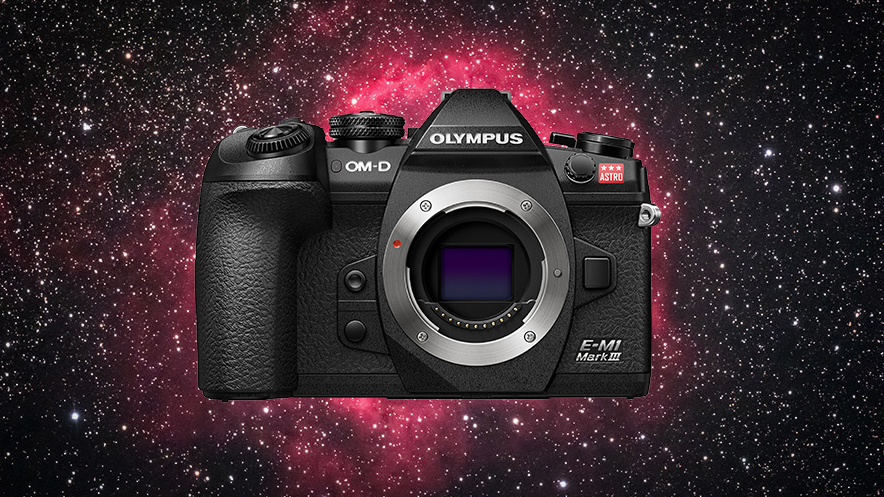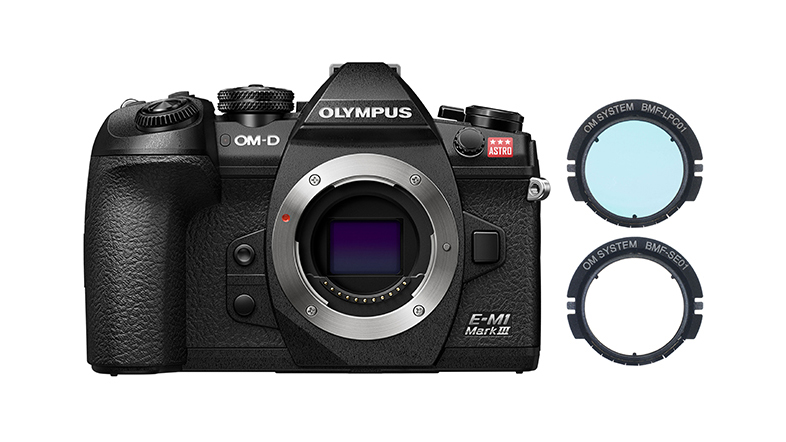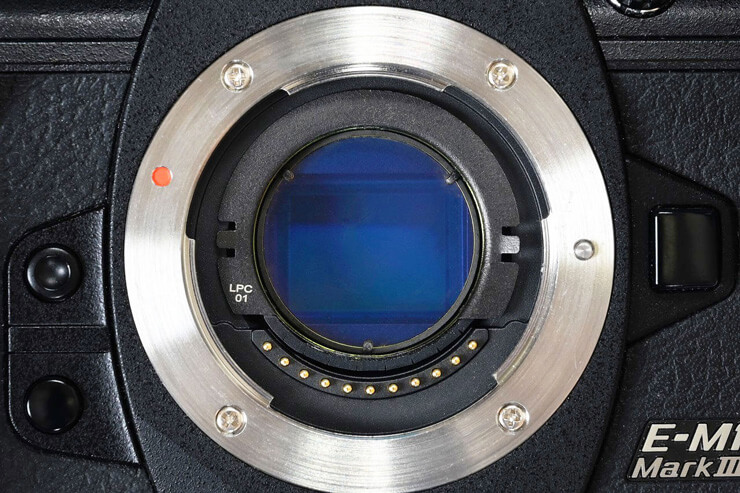Olympus is NOT dead! A new camera launches from beyond the grave
A NEW Olympus camera just launched! This very special body is made to order, and comes with clever new body filters

In a move that nobody saw coming, a brand new Olympus camera has just been launched: a special edition astrophotography version of the Olympus OM-D E-M1 Mark III, formerly the brand's flagship camera.
When Olympus concluded the transfer of its imaging division to OM Digital Solutions in 2021, it signaled the end of the Olympus brand name appearing on cameras. Well, it was supposed to.
While the company insisted to me that the OM System OM-1 would be the last camera ever to bear the Olympus brand name, OM has just announced the new OM System E-M1 Mark III Astro – which, as you can see, bears the Olympus logo. (OM actually did the same thing a couple of years ago,
This is modified version of the original E-M1 Mark III. Everything is the same (save for the red "Astro" badge on the front) except that it has an specialized IR cut filter in front of the image sensor.

This "significantly improve[s] transmittance of Hα rays, which results in images with a strong reddish cast," says the company. This refers to the hydrogen-alpha wavelength of the spectrum, invisible to the naked eye, which is the strongest emitted by hydrogen nebulae commonly observed in astrophotography.
"The OM System E-M1 Mark III Astro has an IR cut filter in front of the image sensor that has been optimized for optical characteristics to achieve approximately 100% transmittance of Hα rays, which are important for astronomical photography. This allows you to vividly capture the beautiful shapes and colors of nebulae that emit light from Hα rays, which are difficult to capture with ordinary digital cameras."
However, unlike some astrophotography cameras from other manufacturers, this isn't any old camera with an IR filter slapped on it and marketed for astro work; the E-M1 Mark III boasts a number of computational features that make it one of the best cameras for astrophotography.
Get the Digital Camera World Newsletter
The best camera deals, reviews, product advice, and unmissable photography news, direct to your inbox!
Chief among these is the Starry Sky AF function, which uses a special algorithm to facilitate autofocus on even the tiniest stars – liberating stargazers from having to focus manually. It even offers a mode for handheld Starry Sky AF, which is a bit of a game changer!
Combined with other features such as High Res Shot (which uses pixel shift to generate 50MP or 80MP images from the 20.4MP sensor) and Live Composite (a bulb mode which only exposes new or brighter areas of the image, making it ideal for star trails or shooting stars), this becomes a very formidable astro camera.

So, while the cynical might suggest that OM simply found a few boxes of unsold E-M1 Mark IIIs in a warehouse and found a creative way to offload them (as it may have done in 2023, when it launched the IR System featuring infrared-modified versions of the E-M1 Mark III and E-M1X), this new Astro body is incredibly capable.
Currently, and no doubt ongoingly, the OM System E-M1 Mark III Astro will only be available in Japan – and as a special made-to-order product, priced at ¥327,800 (approximately $2,025 / £1,590 / AU$3,030), going on sale July 25.
Interestingly, it comes bundled with two new body filters that fit between the lens mount and lens: the OM System BMF-LPC01 (light pollution) filter and BMF-SE01 (soft focus) filter. These will also be available individually, priced ¥41,800 ($258 / £203 / AU$387) and ¥30,800 ($190 / £149 / AU$285) respectively.
While the OM website states that they are only compatible with the E-M1 Mark III, OM-1 and OM-1 Mark II, I do not believe there are any physical differences between these mounts and those of any other Olympus, OM System or other Micro Four Thirds camera – so I can't see why they wouldn't work on any given body.
Take a look at the best Olympus / OM System cameras, along with the best Olympus / OM System lenses. And, as an open platform, you can use any of the best Micro Four Thirds lenses on your MFT camera.

James has 22 years experience as a journalist, serving as editor of Digital Camera World for 6 of them. He started working in the photography industry in 2014, product testing and shooting ad campaigns for Olympus, as well as clients like Aston Martin Racing, Elinchrom and L'Oréal. An Olympus / OM System, Canon and Hasselblad shooter, he has a wealth of knowledge on cameras of all makes – and he loves instant cameras, too.
